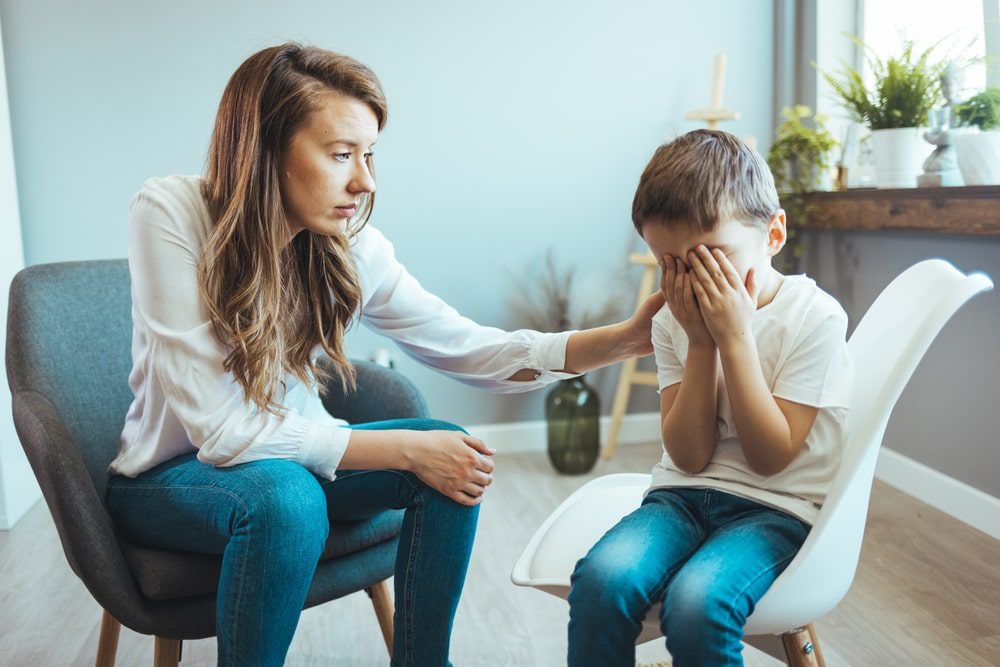Let’s talk about the most common types of trauma!
While nearly everyone experiences traumatic or distressing events at some point in their lives, not everyone deals with what clinicians characterize as one of the forms of trauma. Being bullied as a kid or making a major faux pas in public can be very difficult to get over.
How one experiences these unsettling events, regardless of their severity, usually determines the extent of the trauma they have endured.
Many individuals, however, experience considerably higher levels of distress resulting from traumatic events such as violence, abuse, and assault, to name a few. Symptoms often start to show in the wake of such traumas and generally motivate to seek therapeutic intervention.
To help our readers understand the common types of trauma and how they may be recognized, each has been explained below.

1. Physical abuse or assault
Sadly, this is one of the most common types of trauma. Sufferers of this category of distressing events have been subjected to physical forms of violence such as assault with a weapon, beatings (e.g., with a hand or an object such as a belt), or burning.
A power differential generally exists whereby an individual (often a parent or spouse) or group (like a gang) who holds greater authority or power over the victim uses control over the other by force.
According to experts, the rivalry between siblings or normal roughhousing, while it may result in injury, doesn’t constitute physical abuse.
2. Non-consensual intimate abuse or assault
Any unwelcome and unsolicited attention or conduct of an intimate nature falls under the category of abuse or assault. Such behaviors include, but aren’t limited to, exposure to explicit material, touching, caressing, kissing, intercourse, and forced promiscuity in exchange for money.
Unfortunately, this is also one of the most common types of trauma. The key factor isn’t the form that the experience or exposure takes, but that the victim neither seeks nor wants it.
Minors who are abused physically or exploited via digital means are never considered to be consenting, given their age. Any kind of conduct of this form with or attention toward a minor falls under the umbrella of non-consensual intimate abuse.
3. Emotional abuse
There are several types of trauma that have nothing to do with physical events, and emotional abuse is one of them. This kind of trauma deals with abuse experienced through emotional rather than physical means. This happens when someone uses demeaning language or threatens another person with violence, inflicting emotional pain.
Other types of trauma that involve emotional abuse include exercising control over others, emotional neglect, whereby the abuser refuses to affirm or acknowledge the victim under any circumstances, and creating a double-bind scenario where the sufferer can’t “win” no matter what they do.
Keep in mind that there doesn’t have to be anything physical to fall under the trauma umbrella. Emotional abuse can be as distressing as other types of trauma.
4. Domestic violence
Both threatened and actual violence of an emotional, physical, and/or intimate nature between two married or cohabitating adults constitutes domestic violence. Navigating this kind of traumatic encounter isn’t easy and can lead to lasting mental health effects.
In fact, according to experts, witnessing domestic violence can be just as distressing as experiencing it firsthand. Kids who grow up in environments where this form of abuse is common often show signs of trauma as a result.
Read on to learn more about other common types of trauma!

5. Neglect
Failure to offer a dependent the necessary care for survival is considered neglect. This type of traua results from having the basic elements such as nourishment, clothing, medical care, or housing withheld.
While neglect usually involves parents not providing for their dependent kids—something that is often reported to child protective services—it can happen to anyone of any age when they don’t receive the necessary care needed to survive.
But there’s one more thing here: neglection can also be of an emotional nature. This happens when an individual’s affectional needs are consistently ignored, invalidated, disregarded, or unappreciated by a significant other. According to experts, emotional neglect is one of the most common types of trauma among children.
6. A life-threatening illness or calamity
Different distressing events can lead to different types of trauma, and a category of such events constitutes natural disasters. People who live through severe natural occurrences are particularly prone to experiencing symptoms of trauma.
A serious health problem can disrupt all aspects of life, whether it’s a life-threatening or chronic illness, such as cancer, or a major health event such as a heart attack, stroke, or debilitating injury.
Many serious health issues seem to strike unexpectedly, disturbing your life out of the blue. You may feel overwhelmed by waves of distressing emotions—from worry and fear to profound despair, sadness, and grief—or just frozen, numb by shock or the feeling that you will never be able to cope.
Painful medical treatments or procedures that induce fear can also be included in this category.
7. Natural disasters
Different distressing events can lead to different types of trauma, and a category of such events constitutes natural disasters. People who live through severe natural occurrences are particularly prone to experiencing symptoms of trauma.
Every year, individuals all over the world are exposed to clusters of natural disasters, and many of them end up developing post-traumatic stress disorder (PTSD). According to clinicians, after such an event, it’s normal to experience several stress reactions that may linger for a significant period.
And after the unexpected, traumatic loss brought by disasters, it’s normal for mourning and grieving to be erratic, more intensely felt, and extended over time.
Deadly back-to-back hurricanes, mass wildfires, flooding, and earthquakes are among the many disasters that leave their victims with many types of trauma and displaced for long periods.
8. War-induced trauma
PTSD has become inextricably associated with veterans returning from war, but it can scarcely be limited to that category of people alone.
Anyone who has experienced a serious level of stress from exposure to a life-threatening event can be affected. Trauma from war-related or war-like events such as witnessing dismemberment and torture and being under artillery fire fall under this category.
If you’re dealing with PTSD, here’s a workbook that can help you cope with frightening thoughts.

9. School and workplace bullying
Bullying also falls into the most common types of trauma category. Whether occurring amongst kids at school or adults in the workplace, covert or overt power imbalances can result in forms of bullying whereby the individual or group in power exerts control over the victim employing emotional and psychological terror tactics.
Experts state that adults who bully others at work will get the support of their colleagues, who will collude in a relentless act of psychological terror against a helpless target. Victims of workplace mobbing are usually capable, intelligent, and strong women.
10. Mass shootings
Last but not least on the list of common types of trauma are mass shootings. Twenty years ago, this kind of event occurring in public schools was relatively unheard of. Sadly, nowadays, not only do American kids fear for their safety in the classroom, but concertgoers or even people using the subway are equally targeted by those to do harm to large groups of innocent people.
The inability to avoid or foresee these circumstances can create high levels of anxiety.
If you find that our article on common types of trauma was helpful, you may also want to read the Top 6 Earliest Signs of Anxiety Disorder in Seniors.














One Response
“or just frozen, numb by shock” This really hits the mark. It explains why I never get anything done and just want to sit and do nothing at all.